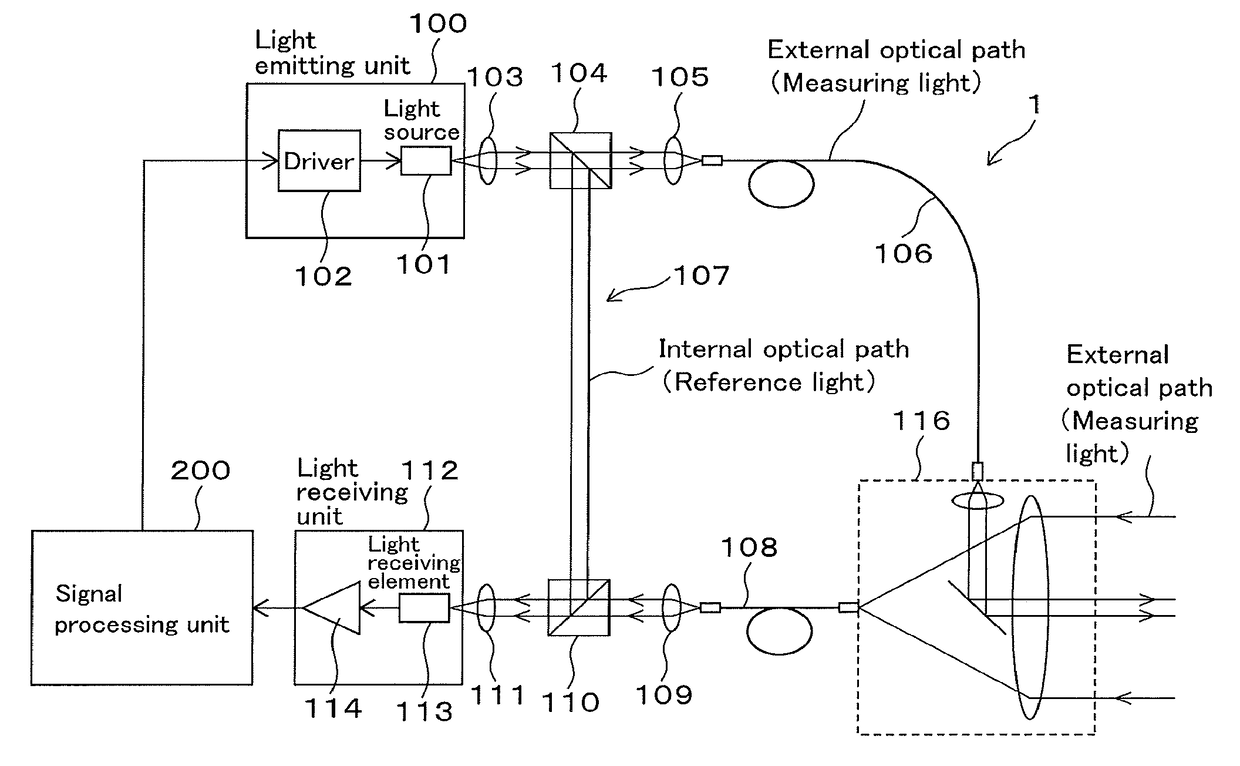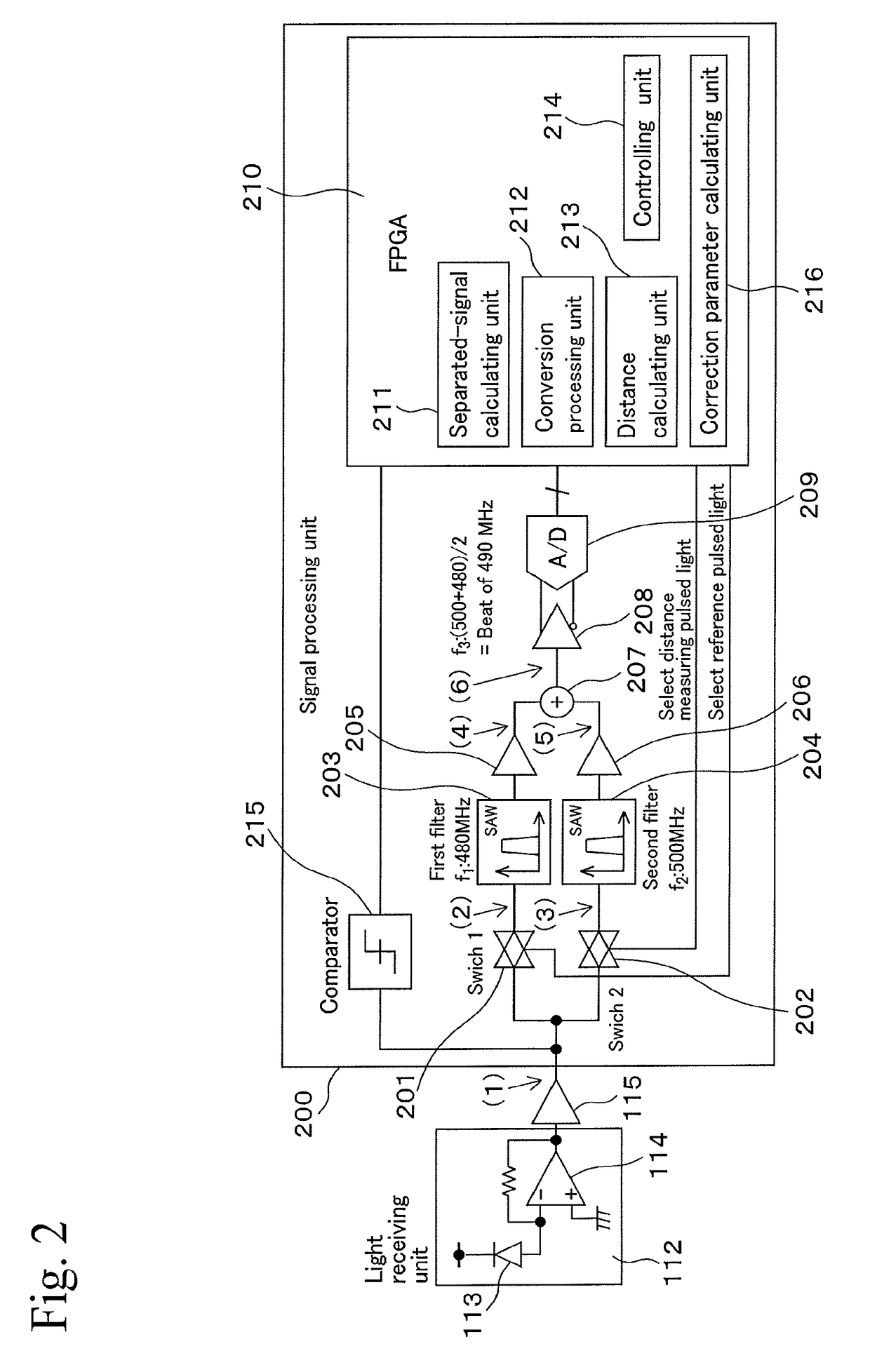Distance measuring device and method for calibrating the same
- Summary
- Abstract
- Description
- Claims
- Application Information
AI Technical Summary
Benefits of technology
Problems solved by technology
Method used
Image
Examples
first embodiment
1. First Embodiment
Structure
[0026]FIG. 1 shows a distance measuring device 1 that measures distances by using a phase difference measurement method. The distance measuring device 1 is configured to be mountable on a table of a tripod or the like. FIG. 1 shows a block diagram of the distance measuring device 1. Although not shown in FIG. 1, the distance measuring device 1 includes a power source, an interface for communicating with an external device, interfaces by which an operator can perform various operations, such as a control panel, a display, and the other units, and hardware and software that are the same as those equipped in a publicly known distance measuring device.
[0027]The distance measuring device 1 includes a light emitting unit 100. The light emitting unit 100 has a light source 101, which emits pulsed light to be used as measuring light and reference light, and has a driver 102 for driving the light source 101. Here, the measuring light is light that is emitted to an...
second embodiment
2. Second Embodiment
[0089]According to the First Embodiment, the added signal is processed by FFT analysis and is separated into the reference detection signal and the measurement detection signal, and then the phase difference between the reference detection signal and the measurement detection signal is detected and is used for calculating the distance to the object. This method is one of methods for calculating distances to objects based on added signals. The added signal contains information relating to the phase difference between the reference detection signal and the measurement detection signal.
[0090]For example, a first added signal may be obtained by adding a first reference detection signal and a first measurement detection signal together, and a second added signal may be obtained by adding a second reference detection signal and a second measurement detection signal together. At this time, if the phase difference between the first reference detection signal and the firs...
PUM
 Login to View More
Login to View More Abstract
Description
Claims
Application Information
 Login to View More
Login to View More - R&D
- Intellectual Property
- Life Sciences
- Materials
- Tech Scout
- Unparalleled Data Quality
- Higher Quality Content
- 60% Fewer Hallucinations
Browse by: Latest US Patents, China's latest patents, Technical Efficacy Thesaurus, Application Domain, Technology Topic, Popular Technical Reports.
© 2025 PatSnap. All rights reserved.Legal|Privacy policy|Modern Slavery Act Transparency Statement|Sitemap|About US| Contact US: help@patsnap.com



